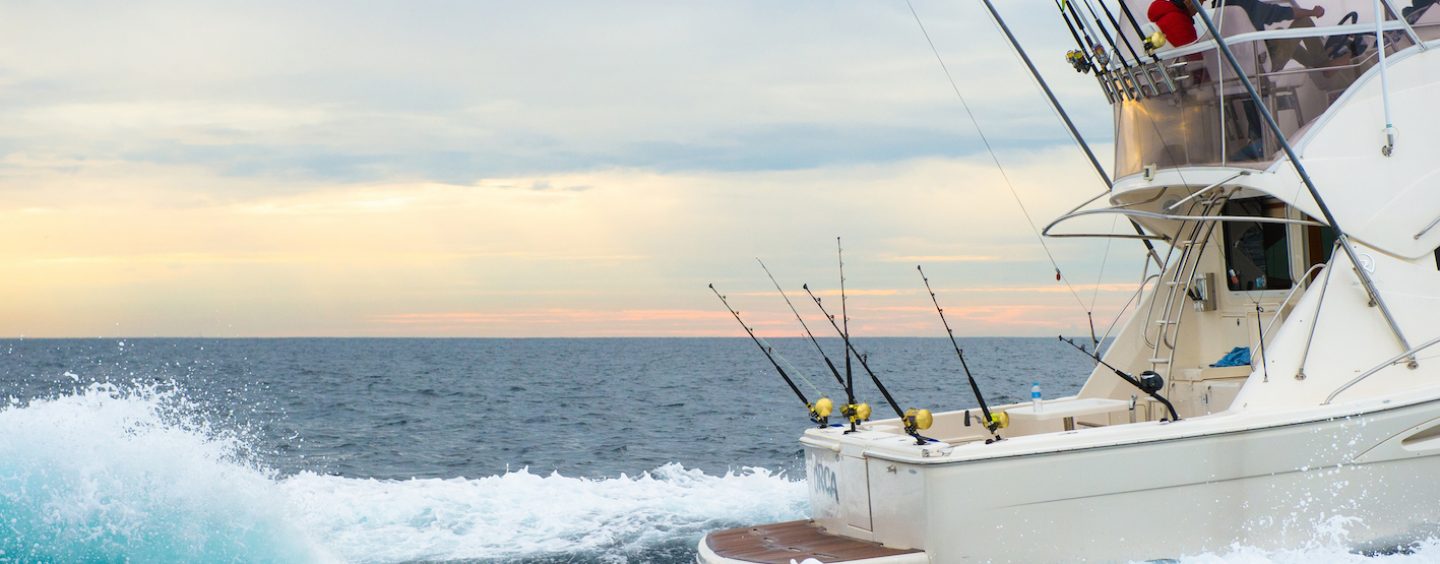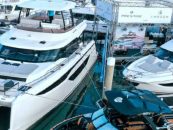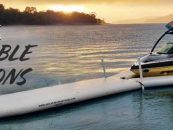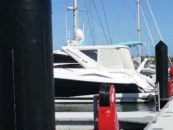NEW QLD FISHING REGULATIONS
Future Queenslanders will continue to get access to fresh local seafood and thousands of jobs will be protected under changes to fisheries regulations that came into effect on 1 September 2019.
“Our state’s fisheries belong to all Queenslanders and it is our job to protect fish for the future,” Mark Furner, Minister for Agricultural Industry Development said. “Some of our fish stocks like scallops, snapper and pearl perch are at risk, with stock levels under the nationally recommended 20 per cent biomass level. Introducing catch limits for at risk species and continuing to crack down on illegal fishing will help us rebuild numbers.”
Some of the changes for recreational fishers include:
- Introducing new annual seasonal closures for snapper and pearl perch from 15 July to 15 August.
- New boat limits, which hold the operator of the boat responsible for ensuring no more than two times the possession limit for nine priority black market species – mud crab, prawns, snapper, black jewfish, barramundi, Spanish mackerel, shark, tropical rock lobster, sea cucumber – is on board at any time. For example, the personal in-possession limit of mud crab will be 7 and the boat limit will be 14. The boat limit does not apply to charter boats.
- General possession limit of 20 fish, excluding bait.
- Reducing mud crab limit from 10 to 7.
Mr Furner said almost 1 million Queenslanders went recreational fishing in the state in 2018. “To ensure recreational fishers can continue to catch fish, we need to have sensible limits to protect fish for the future,” he said.
Note that the Queensland Boating and Fisheries Patrol will not immediately issue fines for non- compliance with these changes. Over the next few months, the focus will be on education and awareness. The fisheries website, recreational fishing app, and recreational fishing guides are being updated to reflect the new rules.
To clarify doubts and to dispel the myths about these changes, visit fisheries.qld.gov.au or call 13 25 23.
REGO STICKERS IN QLD NO LONGER REQUIRED
Faded and peeling boat registration stickers effective will no longer trouble frustrated boaties 1 October 2019.
Acting Transport and Main Roads Minister Steven Miles said it made sense to end the need for boat rego labels after the stickers for cars were phased out in 2014.
“Boat registration stickers peel and fade because they are constantly exposed to the harsh weather, and there are still offences associated with not having one properly displayed,” Mr Miles said. “That doesn’t make sense really and boaties have called for us to get rid of them, so we are.”
Mr Miles said Maritime Safety Queensland, Queensland Police Service and compliance partners would continue to enforce registration of vessels through the vessel registration numbers on the hull. “We’re getting rid of stickers but not registration requirements,” Mr Miles said. “Boat owners will still need to ensure their vessel is registered and registration renewal notices will be sent to them as usual before the due date.”
Transport and Main Roads will continue to provide boaties with registration information and tools to remind them of their registration expiry/due date.
You can also check if your boat’s rego is current at www.qld.gov.au/checkrego, or by downloading the Qld Rego Check App. You can sign up to receive email reminders www.service.transport.qld.gov.au/ ecorrespondencepreferences.
AUCKLAND TO GOLD COAST RACE IN 2021
The Royal New Zealand Yacht Squadron will be celebrating its 150th anniversary in 2021, which also coincides with Auckland hosting the 36th America’s Cup. The Squadron has secured two offshore races for their 150th year, among a plethora of major events and races, one of which is a race from Auckland to Southport Yacht Club (SYC) in Queensland.
The 2021 Auckland to Gold Coast Ocean Race will be a Category One ocean race and will provide a solid challenge for the fleet. Expressions of Interest (EOI) are now being sought from a wide range of suitability-qualified yachts and crew, from all yacht clubs, both locally and internationally.
The RNZYS has timed the Auckland to Gold Coast Ocean Race deliberately to create the opportunity for entrants to also get involved in some of the popular events on the Australian sailing calendar. As RNZYS Vice Commodore Aaron Young explains, “We think this event is a superb opportunity for sailors to race to Australia and then compete in some of their major events in Queensland, such as the Brisbane to Hamilton Island Race, followed by the Airlie Beach, Hamilton Island and Magnetic Island Race Weeks. The Race allows entrants to enjoy a potentially testing challenge across the Tasman before enjoying the warmer climates and taking part in some of these iconic Australian regattas.”
Interest is already building among Squadron members after a recent announcement of the race at a special 150th calendar reveal for RNZYS Members, and the RNZYS has already received two promising expressions of interest.
SYC Commodore Ray McMahon says the club and its members are looking forward to being involved in this race and helping to celebrate the Squadron’s sesquicentenary in 2021. “I’m so excited to welcome the Auckland to Gold Coast Ocean Race to our calendar of events here at the Southport Yacht Club. To have an International event choose our club (and the Gold Coast) as their destination of choice says a lot about how our great club is seen internationally. I can’t wait to personally welcome every competitor as they arrive at the Southport Yacht Club in 2021.”
The proposed (tentative) start date is Sunday 30 May 2021, from the RNZYS in Auckland New Zealand, and finishing 1,270nm away at the Southport Yacht Club on the Gold Coast of Queensland, Australia.
Register your EOI at www.surveymonkey.com/r/M9FCDDV
For more information, email Andrew Delves: adelves@rnzys.org.nz, or the Southport Yacht Club: enquiries@southportyachtclub.com.au.
NEW SPEED LIMITS SET ON COOMERA RIVER
New speed limits have been set by the Gold Coast Waterways Authority (GCWA) using data gathered during a 12-month speed limits trial, stakeholder engagement and strong community feedback.
The aim of the trial was to ensure an acceptable level of marine safety, while reducing travel times and improving operating efficiency for smaller vessels and personal watercraft (PWC) and addressing wash.
Beginning August 2019, the speed limits are set at 30 knots for vessels less than 6.5 metres in length, and 6 knots for vessels 6.5 metres and over for the Coomera River (South Branch) between Sanctuary Cove and its entrance into the Broadwater near Paradise Point. Additionally, there is a 6-knot speed limit for all vessels in the narrow channel between a small unnamed island and the entrance to Hope Harbour Marina. New speed signs for the new speed limits have been installed in the river.
GCWA CEO Hal Morris said the new speed limits reflected feedback from waterways users, waterside residents and businesses along the river, and strike a balance on differing community needs. “The Coomera River system is unique to the Gold Coast because of the mixed uses it attracts. Unlike other rivers, it has no cross-river bridges. It provides the main access point for boats travelling to the Gold Coast Marine Industry Precinct for servicing. It’s used as a recreation area for all types of watercraft and it has many waterfront residential areas. This presented us with some real challenges and complexities in making a decision on speed that addressed the differences of opinion expressed during the trial. For example, waterways users told us the speed limits improved waterways access because travel times were reduced. However, waterside residents raised concerns about damaging wash, environmental impacts and noise. They’re all valid points so we’ve listened and taken that feedback into account, as well as information gathered during the trial, to reach a compromise on speed limits in this section of the river.”
Mr Morris said that while the 30 knots speed limit for smaller vessels is comparable to the 50 km/h speed limit that applies to built-up areas, speed limits aren’t the only factor governing behaviour. “People in control of vessels need to be aware of other rules like the Collision Regulations and take into account issues such as visibility, weather and traffic density when they’re on the water.”
An implementation package has been developed that includes improved signage on the river, educating waterways users about their responsibilities and options for using technology to help improve speed limit compliance and monitor waterways traffic volumes.
To read the full report, visit gcwa.qld.gov.au.
Compiled by Roselle Tenefrancia
(Published in Oct- Dec 2019 edition)






























